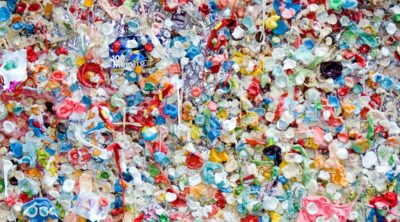
The list of natural resources, presented in this article, mainly classifies them into biotic and abiotic. The list is presented in a form which can be understood in a better manner by kids.
The natural resources can be simply defined as materials which occur naturally in different environmental conditions. There are many things which can be included in the list of natural resources. At present, only those resources found on the earth are included in the list. However, scientists are considering the possibility of obtaining natural resources present on asteroids.
Natural Resources List
Classification of these resources can be done by means of many different criteria. However, on the basis of origin, two main categories of natural resources i.e. biotic and abiotic are formed. The ones which are extracted from the earth’s biosphere are categorized as biotic. Minerals, metals and other such materials (non-living) fall in the category of abiotic natural resources.
Biotic Natural Resources
The biotic resources can be obtained in the raw form, or by means of cultivation through agriculture. Petroleum is a resource included in this category; the organic origin or petroleum is the reason behind its inclusion in biotic resources. The following list provides names of resources directly obtained from the biosphere. Most of the biotic resources are non-renewable in nature. Petroleum and natural gas were formed through years of decomposition of organic matter. This organic matter included the remains of plants and animals. Therefore, the resources are categorized as biotic.
• Timber
• Petroleum
• Natural Gas
• Fruits
• Wax (tree wax)
Biotic Resources (Agriculture)
Crops obtained through farming are the important natural resources. Few of the resources are given below.
Rice, Wheat and Corn
These are the cereals widely used by people the world over. Wheat, rice and corn form the bulk of grains cultivated by farmers for consumption.
Cotton
It is a cash crop which produces raw material for manufacturing of garments. Nowadays, even synthetic fibers are used for manufacturing garments, however, cotton holds the major share.
Sugarcane
The sugarcane crop, just like cotton is considered a cash crop for farmers. Sugar prepared from its cane is used in a variety of food products. In fact, the bakery products and other sweetmeats require sugar as its basic ingredient.
The crops mentioned above are important ones. The list of other plants used for the purpose of cultivation is presented below.
• Oat
• Rye
• Bay
• Cauliflower
• Catnip
• Garlic
• Peas
• Okra
• Squash
• Carrot
• Celery
• Brussels Sprouts
Parsley
Basil
Sunflower
Zucchini
The use of seafood including fish and other creatures (crabs, prawns, etc.) by human beings is in practice for a long time. However, the disastrous consequences of this activity are influencing the world. Inclusion of these organisms in this list should therefore, be a matter of debate. It has been proved that fishing disrupts the ecological balance and also affects the fish habitat adversely. Similarly, feeding on terrestrial animals (meat) also has affected the food web to a great extent. Enlisting the names of these creatures as ‘resources’ might spark a debate in a world where we are increasingly becoming aware of problems associated with the fragile ecosystem.
Abiotic Natural Resources
The different forms of abiotic natural resources are listed below.
Gold
Bauxite
Marble
Sand
• Coal
• Diamond
• Silver
• Nickel
• Copper
• Iron Ore
• Zinc
• Lead
• Sulfur
• Chromite
• Talc
• Barites
• Limestone
• Platinum
• Vanadium
• Salt
• Gravel
List of Renewable Resources
The list presented below, classifies natural resources in a manner that helps us to become aware of the fast-depleting natural resources. While studying this subject, kids should understand that their conservation is the need of time. Educating them about how to make judicious use of these resources is important. The information about renewable natural resources through examples of wind and tidal energy provided at the end should also prove to be useful.
Water
It is the most important natural resource and one cannot survive without water. We can see that life thrives/flourishes in the presence of water. It is a natural resource needed by all living beings not only for survival, but also to grow and develop.
Air
The most abundant and important natural resource for survival, air (in the form of oxygen) is needed by most creatures (except for anaerobic organisms) found on earth.
Sunlight
Just like air and water, sunlight is needed for survival of living beings. The process of photosynthesis is carried out in the presence of sunlight. With plants visibly circulating most of the energy in the food chain, one tends to forget that sunlight is the original source of energy for life on earth. The water cycle too cannot be completed without sunlight.
Plants
The plants are the main energy source for living beings on earth. Carnivores and scavengers obtain energy by feeding on other animals which in turn, feed on plants. Though plants are considered a renewable natural resource, their excessive use could deplete them. For example, the Amazon forest cover is fast shrinking which is a dangerous sign for the health of our ecosystem.
Wind Energy
It is one of the least used resources on earth. The process of obtaining energy from wind doesn’t pollute the environment. Air pollution resulting from combustion of fossil fuels can be reduced to a great extent with the use of wind energy.
Tidal Energy
This form of energy is similar to wind energy in terms of functioning. In fact, the tides/waves of oceans used to obtain energy, originally obtain it from wind. More information in the form of facts about tidal energy should be useful.
Soil
It is one of the most abundant resources found on earth. Soil is needed for growing crops. The same soil can be used over and over for the purpose of agriculture. However, this natural resource needs to be protected from the menace of erosion. Increasing the vegetation i.e. forest cover is the best way to prevent soil erosion.
Classification of natural resources can be carried out also by taking into account the degree or level to which they are developed/processed into products for human consumption. Information about resources taking into account this criterion of classification is presented below.
• Currently Used Resources: These are the natural resources currently used for human consumption. Coal, petroleum, etc. are some of the examples.
• Potential Resources: These are the untapped resources of nature. The potential resources can be put to future use. Hydrogen is one such resource which has the potential to be used as fuel in the future.
The elements enlisted in the article give us an idea of the richness of earth’s resources. The list of natural resources presented in the article is not an exhaustive one. This is because, a natural material takes different forms after it is processed. These different forms are used in different ways and the purpose for which it is used makes it a resource.




















